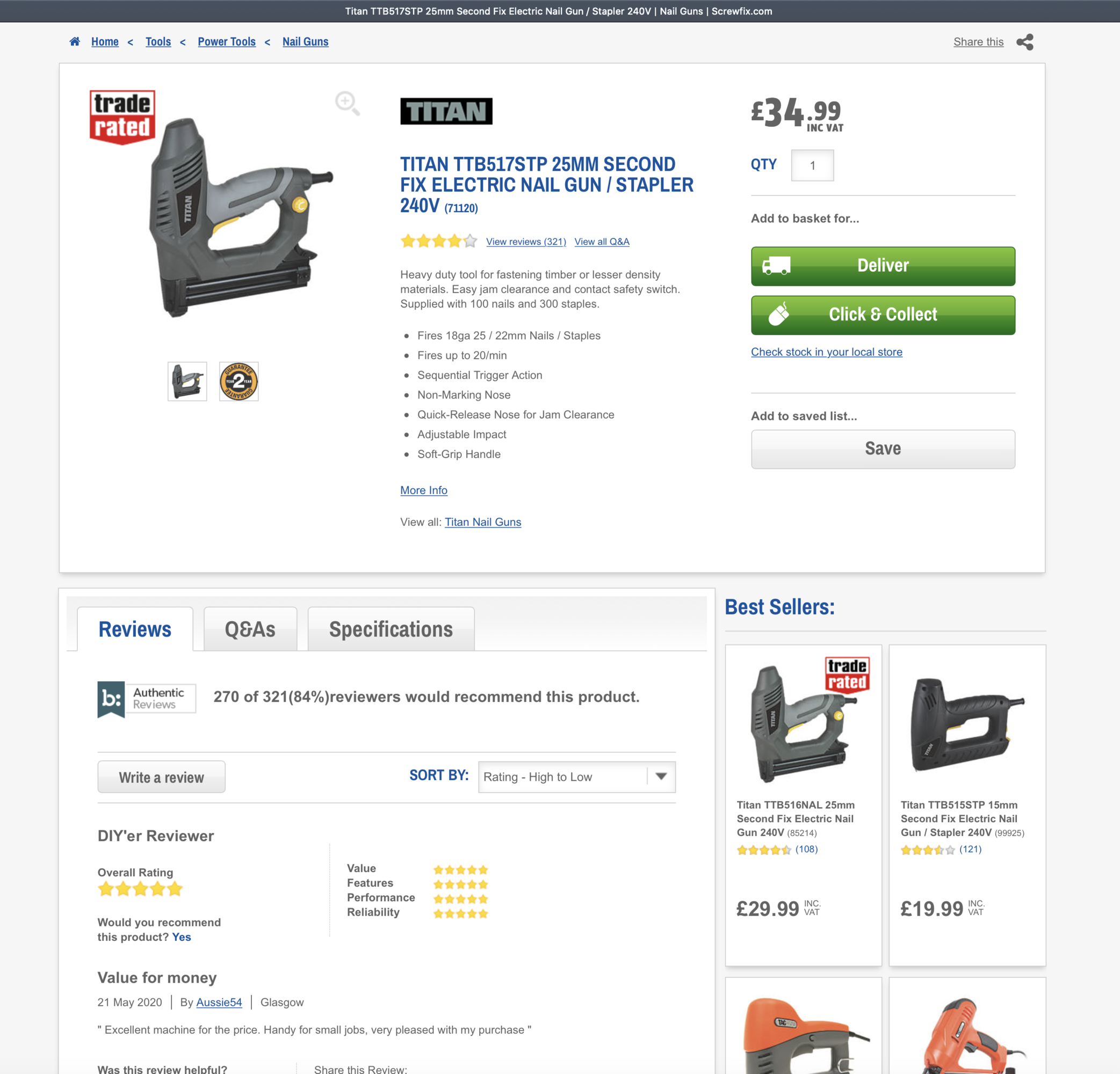Hi am doing some vertical shiplap panels in the kitchen and wainscotting in the living room. I have the pdf and play cut the the correct lengths. I was going to use some strong construction adhesive to fix them to the walls (the walls are smooth and pretty straight) however would like to nail them also just in case they bow over time. I have never used a brad nailer or anything like that before and was just wondering if anyone can recommend something? There are stud, dry and concrete walls. Would I need a separate gun for each? Sorry if this seems a silly question. Thanks in advance!
You are using an out of date browser. It may not display this or other websites correctly.
You should upgrade or use an alternative browser.
You should upgrade or use an alternative browser.
Nail Ply and MDF
- Thread starter joec1985
- Start date
Sponsored Links
D
Deleted member 174758
For stud wall (which is drywall, do you mean plastered masonry, perhaps?) and for plastered masonry a 2nd fix (16 gauge) nailed is ideal when used in conjunction with grip adhesive. TBH no conventional nailer will pierce concrete - the nails simply aren't strong enough. What is generally done is to lay horizontal battens (2 x 1in slate paths or 18mm plywood rips of about 50mm width) across all the different wall types using direct screwing to studwork or drilled, plugged and screwed into masonry or concrete (sometimes called a ground). The walling is then fixed to the battens using a 2nd fix nailer only. By creating a ground such as this you avoid the need for different fastenings for walking on different parts of the wall and additionally the battens can be packed out to straighten non-straight walls as well as being able to correct out of plumb walls. Saves a lot of grief in the long run. Also, as you aren't fixing directly to the wall you can get away with using an 18 gauge pinner as opposed to the heavier 16 gauge I mentioned above
Very helpful thanks. Do you think this would do the job for the stud walls?
https://www.screwfix.com/p/titan-ttb517stp-25mm-second-fix-electric-nail-gun-stapler-240v/71120
https://www.screwfix.com/p/titan-ttb517stp-25mm-second-fix-electric-nail-gun-stapler-240v/71120
D
Deleted member 174758
Don't know, can't see it (dud link).
Sponsored Links
D
Deleted member 174758
Nope. Still can't see it, however the description seems to indicate a 25mm pin length. A bit short, that. Additionally any combined staple gun and nailer will have a wide driver blade (for the staples) which will tend to leave a large, unsightly groove where it has driven the nail.
D
Deleted member 174758
Heavy duty? Don't make me laugh (sorry, but I'm trade and I therefore have different ideas on what heavy duty means.....) I think you need a dedicated pinner/nailer with more like 40mm capacity if you go for a pinner at all. Are you nailing direct to the wall or going for the grounds idea? if so you could always just hand nail your boards with small oval nails, punch them under with a nail set and fill
D
Deleted member 174758
Masonry requires masonry nails. Plasterboard would work with ovals providing you skew them in, although panel pins would also work. For the concrete I can offer no solution (because the pro approach is to drill and fix grounds if possible then nail to that.....)
As the name implies veneer pins are for wood veneers and very thin (2 or 3mm) plywood. They are very hard and are not meant as a permanent fix IMHO
As the name implies veneer pins are for wood veneers and very thin (2 or 3mm) plywood. They are very hard and are not meant as a permanent fix IMHO
Great advice. I have decided to do the batton thing for the shiplap and do it properly. The only thing is I am not removing the skirting so want it flush as it can be. Do you think these would suffice. It is only 7mm MDF strips I will be pinning to it. I will drill the battons into the concrete and pin the MDF. Would these suffice?
Attachments
Way too thin and likely to split if nailed.Great advice. I have decided to do the batton thing for the shiplap and do it properly. The only thing is I am not removing the skirting so want it flush as it can be. Do you think these would suffice. It is only 7mm MDF strips I will be pinning to it. I will drill the battons into the concrete and pin the MDF. Would these suffice?
Use baton to bring everything flush with skirting and then add new over the top .
D
Deleted member 174758
Got to say that pin/nail holding in MDF isn't the greatest, plywood, OSB or softwood are all superior. The thickness of the battering should ideally be enough to take out discrepancies in the wall whilst not flexing. Also needs to be thick enough to provide sufficient holding power. TBH 7mm MDF fails on all three counts, even if you skew nail. Better would be something like 5/8in (16mm) ply or 18mm softwood, especially if you are cladding with 16 to 18mm MDF. As Foxhole says it generally isn't worth trying to retain the existing skirting in situ
DIYnot Local
Staff member
If you need to find a tradesperson to get your job done, please try our local search below, or if you are doing it yourself you can find suppliers local to you.
Select the supplier or trade you require, enter your location to begin your search.
Please select a service and enter a location to continue...
Are you a trade or supplier? You can create your listing free at DIYnot Local
Sponsored Links
Similar threads
- Replies
- 5
- Views
- 3K
D
- Replies
- 1
- Views
- 453
- Replies
- 8
- Views
- 8K






